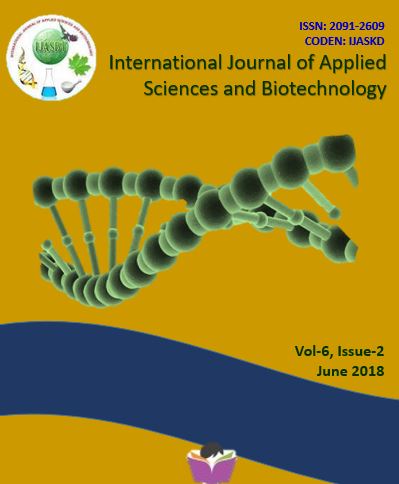Factors Affecting and Marketing Chain of Ginger in Salyan District, Nepal
DOI:
https://doi.org/10.3126/ijasbt.v6i2.20420Keywords:
ginger, value chain, farmers, descriptiveAbstract
Ginger is the potential high value sub-sector in Nepal for small scale farmers’ livelihoods. In this context, this research was conducted in 2016 to analyze value chain of ginger sub-sector in Salyan district of Nepal. Dadagaun and Tharmare VDCs of Salyan were purposively selected for the study. Primary data were collected using semi-structured questionnaire for household survey as well as focus group discussion (FGD), key informant interview (KII) and rapid market appraisal (RMA) survey were used. Household level cross-sectional data from 140 households (70 from Dadagaun and 70 from Tharmare VDC) were sampled using simple random sampling technique. Descriptive statistics, and value chain analysis were used to analyse data. Average land under ginger cultivation was 1.62 ropani which was higher in Dadagaun (2.17 ropani) than Tharmare (1.07 ropani) and found statistically significance different at 1 percent level. The average marginal cost of fresh ginger was NRs. 12.15/kg. Local traders were the major market actor influencing the price of ginger and bargaining power as the major factor whereas farmers were seemed weaker in the value chain due to low bargaining power with lack of market information. Huge marketing margin (NRs. 94/kg) and low producers share (14.55%) showed that there was no strong linkage between the producers and traders. This study revealed that ginger value chain analysis in the study area found very unstructured and poor strengthening of business enabling environment, unorganized functional market chain and poor inputs and service provision.
Int. J. Appl. Sci. Biotechnol. Vol 6(2): 127-131




